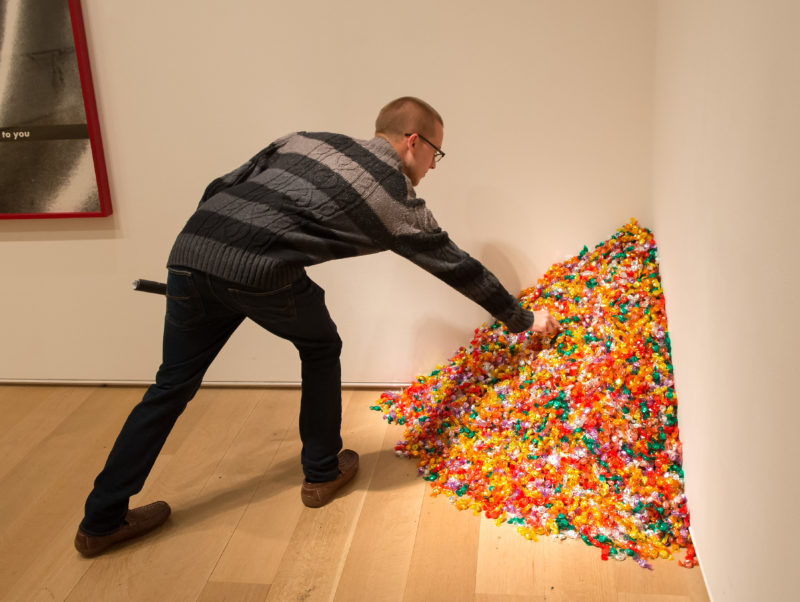For my second civic artifact, I decided to go with “Untitled” (A Portrait of Ross in L.A.) by Félix Gonzáles-Torres. This installation was created in 1991 as an allegorical representation of Ross Laycock, Gonzáles-Torres’s partner, who died from an AIDS-related illness that same year. The installation is ideally 175 lbs worth of candy, which viewers are supposed to take when they view the piece. This represents Laycock’s weight loss as his illness progressed. However, the pile of candy is refilled to be approximately 175 lbs or more to metaphorically give Laycock perpetual life.
![Untitled (Portrait of Ross in L.A.) [Felix Gonzalez-Torres] | Sartle ...](https://www.sartle.com/sites/default/files/images/artwork/candy_b_2.jpg)
For this civic artifact, I will also be using the public memory lens as well as the visual rhetoric lens to compare it to the AIDS Memorial Quilt’s goals as a memorial. “Untitled” works with the public memory lens because it effectively engages with the audience’s empathy. Because the audience is allowed to take a piece of candy from the pile, they are actively witnessing and partaking in Laycock’s “suffering”, allowing them to understand the devastation, pain, and loss that comes with AIDS. From a visual standpoint, this is an interesting piece that changes every time the candy pile is replenished. The candy used is commercially distributed candy wrapped in bright, multicolor cellophane, positioned in a corner of the room, and never stays the same.

While the AIDS Memorial Quilt and “Untitled” are obviously different: one is a large memorial quilt made up of approximately 50,000 pieces, each piece unique to a person who passed away, and it raised thousands of dollars for AIDS research in the ’80s – and the other is an edible art installation from the ’90s, unique to a single person with the intention of raising awareness of the intimate suffering of those with AIDS while still honoring one’s late partner.
The AIDS Quilt is effective as a larger memorial because it wanted to show the scale of the devastation caused by the AIDS crisis and it built solidarity between a large community of those who lost someone to the disease. This piece was created during the height of the AIDS crisis and heavily contributed to raising funds for researching treatment options for those affected through its large audience.
“Untitled” is effective as a smaller, more personal piece because it focuses on an individual and his relationship with the artist. While the AIDS Quilt focuses on the number of people lost, this piece focuses on emphasizing the effects of AIDS-related illnesses and their toll on the human body.
However, both focus on raising awareness about the devastation of AIDS and the AIDS crisis while honoring individuals – whether as a group or alone- who passed. Both are dedicated acts of love that utilize rhetorical devices to persuade their audiences to care about other’s well-being, especially those who are part of marginalized groups. To witness either is a humbling experience, regardless of size, medium, or time period.

“Untitled” (Portrait of Ross in L.A.), 1991 – Felix Gonzalez-Torres – WikiArt.org







